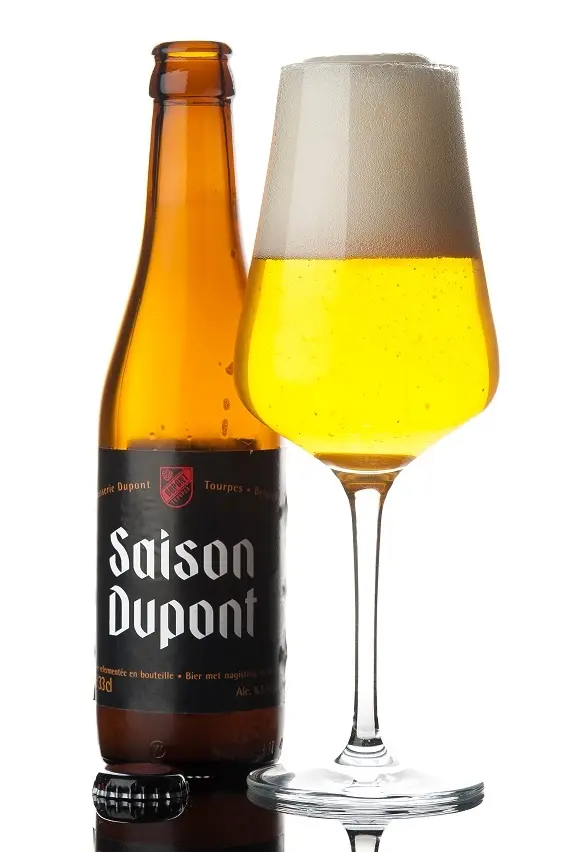As the name implies, this is a seasonal ale that originated in Belgian Wallonia. A weak drink that was drunk while working in the field to maintain strength and quench thirst. Initially, it was always brewed from local ingredients, but when production reached the industrial level, new recipes began to appear. At the same time, the strength of the drink has also increased, because now its lovers do not have to keep their heads clear.
The strength and color depend on the manufacturer, a distinctive feature of the style is good attenuation, a very dry finish, high carbonation. The malt-hop balance manifests itself in different ways: in a light ale, hops are more felt, in a dark one – malt. Yeast character required.
It can be made not only from barley, but also from other cereals (wheat, oats, etc.), sometimes spices are added to the composition. Tones of spices, fruits, citruses, earth, herbs are felt in the bouquet. Malt gives nuances of grain, biscuit, caramel, chocolate. Light sourness does not contradict the style standards. The aftertaste is spicy, bitter, there should be no burnt aftertaste.
The malt can be light or dark, but not roasted. Hops Zhatetsky. Sometimes sugar, honey, herbs, spices are added to the drink.
The style is similar to Belgian Blonde Ale, but more yeasty and hoppy. Pale variations can be compared to a Belgian triple with a more pronounced yeast character.
It is light or medium bodied. Despite the fact that the “ancestor” of the style was almost non-alcoholic, strong versions are acceptable today.
The color varies from golden to dark brown, in the glass it forms a dense, persistent foam. Sparkling beer, unfiltered. It can be table, standard and super strong.

Strength: 3.5-9.5%.
Density: initial 1.048-1.065, final 1.002-1.008.
Bitterness Index: 20-35 IBU.
Color: 5-22 SRM.









